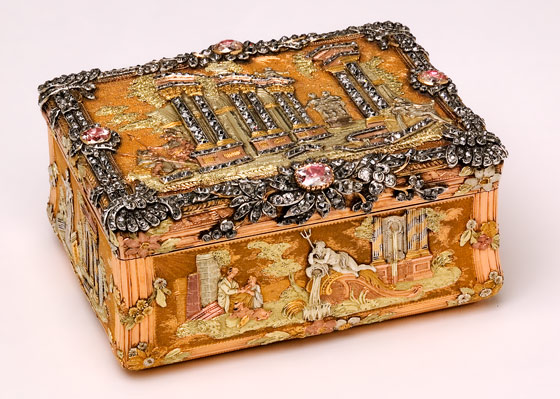Boxes
You can find boxes in a huge range of shapes, sizes and prices. Price is usually determined by quality and materials used. In general, boxes made from wood or papier mâché are usually widely available and most affordable.
Boxes from the 18th century
Some of the most exquisite boxes you’ll see were produced during the 18th century to contain snuff, patches or tobacco.
The best-quality ones might have been made from gold or silver, perhaps decorated with precious stones. Enamelled and porcelain boxes were also popular, some of the most attractive being made in the shape of a bird or animal.
Lacquer boxes
Lids of the 19th century lacquer boxes were often decorated with a copy of a well-known Old Master – erotic subjects were always especially popular. This one shows nymphs bathing, with mischievous voyeurs in the bulrushes! Like many boxes of this type it was made in Germany, and is stamped on the interior with the words “Stobwasser Fabrik”. A box like this is worth about £300 to £500.
Enamel boxes
Bilston in Staffordshire, Birmingham and Battersea led the field in producing English enamel boxes during the 18th century. Chipping will reduce the value. The box shown at the top of the page, which dates from the late 18th century, is damaged around the base and is worth about £80. In better condition it might cost twice as much.
Tortoiseshell
Tortoiseshell, moulded by heat and pressure, was often used for making small boxes during the 18th and 19th centuries. This 19th-century cigar case is decorated with stellar piqué (an inlay of gold or silver) and is worth about £200 to £300.
Tunbridge ware
Tunbridge ware was mostly made, as the name suggests, in the Tunbridge Wells area of Kent. This skilled technique involved making pictures from long strands of differently coloured woods which were glued together then sliced cross-wise into thin sheets. Value depends on the fineness of the decoration. This box is of average quality and would fetch £300 to £500.



















